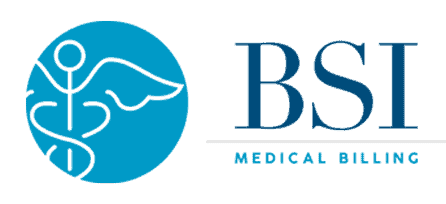Current Procedural Terminology (CPT) Updates
CPT codes allow physicians and healthcare providers to communicate uniformly throughout the healthcare industry. However, improper medical coding can lead to claims denials, extended payment turnaround times, and even a loss in revenue. Keep reading to learn how you can stay up to date with new medical coding and ensure accurate, concise reporting across the board.
Key Takeaways
- CPT codes are uniformly-used terminology that allow physicians and medical service providers to communicate their services clearly and accurately.
- CPT codes are sorted into four different categories and describe the entire range of medical services. This includes procedures, drug prescriptions, follow-up care, emerging technology, and lab analyses.
- CPT codes are updated annually, and they go into effect on January 1st.
- CPT updates reflect evolving practices. However, using incorrect or outdated codes can cause major issues for billing services.
- You can ensure that you’re always performing accurate, compliant medical reporting by partnering with a reputable medical billing and coding provider.
What Are CPT Codes?
CPT codes are a set of approved medical coding terminology that help evaluation and management (E/M) services communicate clearly and uniformly regarding their practices. CPT codes were developed in 1966 by the American Medical Association (AMA) to accurately and concisely describe the medical, diagnostic, or surgical procedures that physicians and other healthcare professionals perform.
CPT codes are composed of five alphanumeric characters.For example, the 2022 CPT code for an X-ray exam of a forearm is 73092. In some cases, the CPT code is followed by a two-character modifier.
Types of CPT Codes
Category I Codes: These CPT codes describe services, procedures, devices, and drugs.
Category II Codes: These alphanumeric codes describe follow-up care and performance measurement.
Category III Codes: These are temporary codes that allow a physician to describe the use of emerging technology, procedures, and services. The AMA says that these codes are used for data collection, assessment, and payment of new services that don’t quite meet the criteria for a Category I code.
Proprietary Laboratory Analyses (PLA) Codes: These codes describe proprietary clinical laboratory analyses and include a descriptor that identifies tests for labs and manufacturers.
How Often Are CPT Codes Updated?
New CPT codes are implemented each year on January 1st, and they’re updated annually. Throughout the calendar year, these CPT updates ensure uniformity across the entire medical service sector. CPT code updates are published four months in advance of the January 1st implementation date. As of now, the revised code set for 2023 has already been released. This gives medical services and billing and coding services an important first look at the upcoming changes. With this information, they can prepare their coding and reporting practices accordingly.
Want to make sure your medical billing and coding is up to date? We can help. Learn more about BSI Medical Billing’s services.

Why Are CPT Updates Required?
The American Medical Association provides medical coding updates to ensure that medical coding and billing is as clear and accurate as possible, and that it reflects the current demands and services of a modern healthcare system.
A CPT editorial panel, which is made up of 21 medical professionals, meets three times a year to discuss CPT updates. During these meetings, they review revision submissions from individual physicians, hospitals, medical specialty societies, and third-party payers. While reviewing these submissions, the panel decides whether a code needs to be added or revised. They also determine if there is already adequate coding for that particular submission. Through this process, the CPT editorial panel is able maintain a CPT code that is up to date with current medical standards.
It is essential for a medical provider to keep track of AMA CPT updates because using the incorrect codes from the previous year can cause significant issues for medical billing. Using the wrong coding language can delay or deny your reimbursement. It can also result in receiving only partial reimbursements. If your medical coding is consistently noncompliant with the updated coding, you can find yourself dealing with a large volume of extra paperwork and a substantial loss in revenue.
What Is Included in the 2023 CPT Update?
According to the AMA, the 2023 CPT updates are geared toward streamlining administrative tasks in medicine. This allows physicians and healthcare providers to spend more of their time focusing on patient care and less time on paperwork that doesn’t clinically affect their patients. As such, the 2023 CPT code set includes 393 editorial changes. Within this list, there are:
- 225 new codes
- 75 code deletions
- 93 code revisions
Each year, the CPT code set improves and evolves—as it stands, there are now 10,969 codes that describe the current procedures and services that are available to patients.
How Can I Remain Compliant with CPT Updates?
As mentioned above, improper code usage can result in the delay or denial of full reimbursement for services rendered. With over 10,000 available codes to keep track of, it can be difficult for physicians and healthcare providers to manage all of their coding and reporting themselves while still providing high-quality care to patients.
With the help of a professional medical coding and billing provider, however, medical procedures and services can be managed with ease. At BSI Medical Billing, we provide detailed and error-free medical coding and billing, so you can be sure that you’ll receive full reimbursements on time and without any hassle.
BSI Medical Billing provides comprehensive, customizable coding solutions for any organization within the healthcare sector. Whether you’re looking for a full-scale coding solution or for assistance reviewing your medical coding, we can develop a solution that matches your objectives. Contact us today to learn more about our medical billing and coding services.




